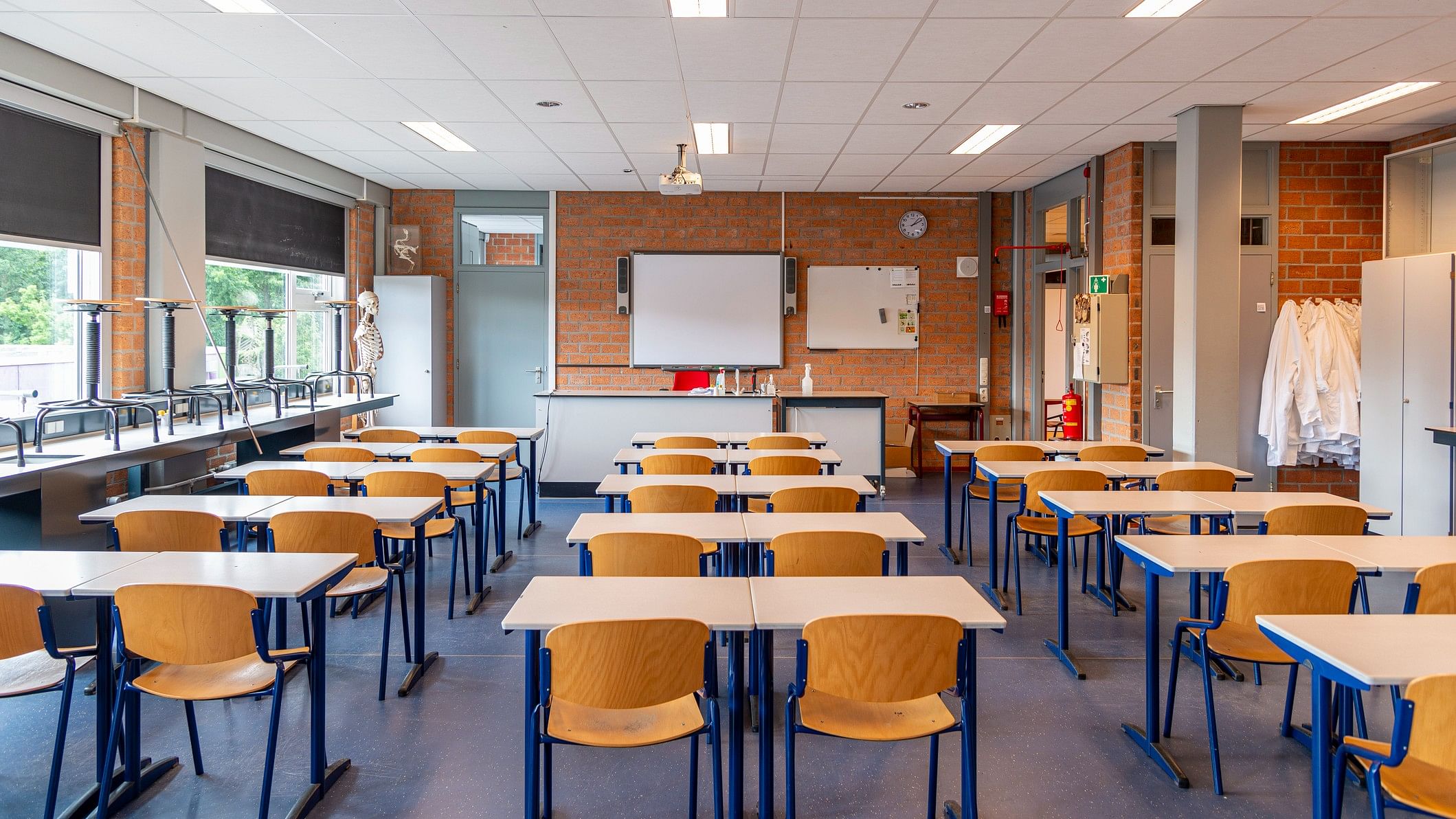
Representative image of a classroom.
Credit: iStock Photo
The NEP 2020 restructures Indian higher education. It seeks multidisciplinarity, flexibility, and global standards. It proposes fresh accreditation and regulation of Indian higher education institutions (HEIs) and reforms them with technology integration, multidirectional learning, and promotion of Indian languages. NEP also aims to transform the Indian education system with professional development and quality enhancement. It envisions critical objectives of equitable access, inclusion, and holistic development for learners. The policy complements equity and social justice as enshrined in the Fundamental Rights and the Directive Principles of the Indian Constitution. However, in Indian HEIs, the existing learning curve does not reflect inclusive learning and unlearning.
Indian learners come from diverse psychosocial backgrounds. Their patrilinear, communal, and casteist upbringing endorses a patriarchal socio-normative power structure. Exceptional enclaves are unique and spatial. The nuances of gender segregation and gender struggle are often not recognised. Tribal students experience social puritanism. Dalit students face discrimination. The social position of a Savarna woman differs from that of a Savarna man. Queer students face the ugliest peer bullying. Minorities encounter social and administrative aggression. The digital divide further impacts classroom dynamics. Thus, the classrooms and stakeholders of Indian HEIs are different, complex, and unique.
Two of the most appreciated participatory pedagogical strategies in Indian HEIs are the Socratic method and the peer teaching technique. Both somewhat address the class, caste, religion, region, community, and gender-specific indexes. Our learners can call for a revised moral assessment and action when challenged with such subjective experiences of their respective social hinterland. With this pedagogy, Indian HEIs cater to a positive, inclusive, outcome-based learning environment. Maslow’s Hierarchy of Needs, Skinner’s Operant Conditioning Theory, and Gestalt Theory facilitate necessary scaffolding. However, existing pedagogy may ensure the least restrictive environment possible, but it does not address the learners’ socio-cultural, politico-economic, and intellectual-aesthetic segregation. The desired sense of belonging among disenfranchised students is thus impeded.
Indian HEIs need to espouse Pedagogy of the Oppressed and Feminist Pedagogy, which juxtapose a dialogue between the dominant and the subservient ranks and articulate the domination quotient of class, caste, religion, region, community, and gender-specific manifestations. They perform the task of analysing those micro- and macro-psychosocial and socio-cultural structures, gauge the perception of heterosexuality from the position of homosexuals, caste from the position of a Dalit, and address the social positioning of gender, caste, and class paradigms and sexual division of labour from a normative position. As learners belong to diverse social, economic, cultural, and gender groups, they bring a variety of cultural practices, knowledge systems, and ‘ways of seeing’; the understanding of manifold identity becomes critical for the educator. These pedagogies offer avenues to liberate learners, educators, and other educational stakeholders from their gendered, classist, casteist, elitist, and privileged paradigms.
The perceived hierarchy within the HEI classroom is that the teacher is more knowledgeable than the students and, therefore, possesses authority, representing Paolo Freire’s “Banking Model.” The teacher ‘deposits’ recallable facts into students’ minds. Such a pedagogy fails to ensure ‘inquiry’ in learning. It patronises the perceived superiority of one over the rest. Instead, Freire’s “Problem-Posing Model” restores an equal educator-learner relationship where the ‘teacher-students’ and the ‘student-teachers’ decide and discuss important subject topics together. The educator becomes a facilitator, presenting the topical ‘problems’ to the class, which they must solve together. It is democratic, assuming everyone’s voice has equal value to contribute intellectually to the ‘knowledge’.
Feminist pedagogy critically examines educational institutions’ power dynamics, structures, hierarchies, and inequalities. Dominant narratives are challenged. Learners are encouraged to analyse how power operates in society within the classroom. Diverse experiences and identities in learning spaces are acknowledged, and hybrid identities are embraced. The role of imagination and aesthetic education fosters critical thinking and social transformation.
Implementation of Pedagogy of the Oppressed and Feminist into the curriculum design, teaching methods, assessment strategies, and classroom interactions would create an organic symbiotic classroom space in HEIs that values empathy, respect, accountability, and a positive educator-learner relationship. Both avant-garde approaches intersect in a dialogic, innovative, democratic space. They are student-centric and ensure creative thinking, and innovation. Inclusivity and diversity are assured in an ethical and caring learning environment. Incorporating such cross-cutting pedagogies in the HEIs treats knowledge as neutral and ‘illegitimizes’ chauvinistic social claims embodying NEP 2020 into India’s educational reform in a truer sense.
(Sreemoyee Sarkar is Assistant Professor, Dept of Political Science and History and Anirban Debsarma is Assistant Professor, Dept of Performing Arts at Christ (Deemed to be University), Bengaluru)